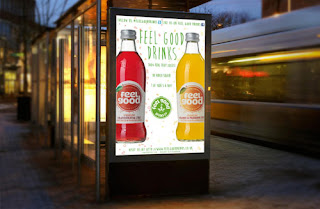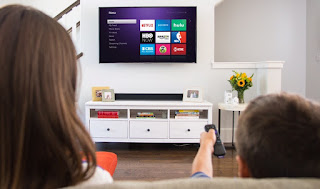Dejean's A2 Blog
Wednesday, 14 February 2018
Question 4 notes
Q4. How did you use technologies in construction, research, planning + evaluation shapes?/ what have you learnt?
Technologies- Blogger, YouTube, Google, Moodle, Calendar, Free apps (Prezi, Google slides, docs etc.) editing- Photoshop, Illustrator, Premiere Pro, Camera (DSLR)
Research and planning:
Music video
Print products
Construction:
Music video
Print products
Evaluation:
Music video
Print products
This is the layout that I am planning to complete question 4 with. It is effective as it shows genuine structure. I know that it fluctuates back and forth from music video to the print products however each time they are repeated, they equally fall under a different subheading, showing consistency.
Tuesday, 13 February 2018
Question 2 Extension
 Some methods that could be used in order to further promote and advertise my print products mainly revolve around the use of TFL (transport for London), including buses, trains and bus stop posters. Judging from research from not only this year in A2 but also AS, many media companies, from either the film, music or radio industry use different media platforms in order to advertise their product. Even though the synergy of promoting the products on transport and posters/billboards is an effective method for reaching the target audience, and benefits both parties, it does come at a costly rate.
Some methods that could be used in order to further promote and advertise my print products mainly revolve around the use of TFL (transport for London), including buses, trains and bus stop posters. Judging from research from not only this year in A2 but also AS, many media companies, from either the film, music or radio industry use different media platforms in order to advertise their product. Even though the synergy of promoting the products on transport and posters/billboards is an effective method for reaching the target audience, and benefits both parties, it does come at a costly rate.
A more beneficial method would be to publish the song or a demo on websites that come free of charge. Obvious examples would be applications in the social media world such as; Instagram, Snap Chat, Facebook or Twitter, as I have previously mentioned them. Another example being YouTube. These all special and important methods if the outcome is to aware people, the target audience especially. They are effective as they benefit the target audience, aged around 18 to mid twenties. Studies have shown that people around this age seem to almost be addicted to electronic devices and social media, you could almost call them technological utopians. If they seem to be addicted to the internet, what better way for the product to be immediately brought to their attention.
Speaking of attention, people of this age, specifically the younger end of the audience, tend to travel on public transport more often, as they don't own a vehicle of their own and must travel to college of work frequently. Posting the products on a bus or bus stop is only another great example of catching their attention.
 Reverting back to social media. It is again beneficial as the audience have better interaction with their idol, this is as they can direct message (DM) the person or even their company if they have any further enquiries. As depicted on the right is a bar chart of the most used social media apps, the top three including; Facebook, YouTube and Instagram. WhatsApp and Messenger don't count as they are purely communication applications. The last and final method that could be used in order to advertise the product could be on public television. As the song has a slight amount of swearing in it, it couldn't possibly be promoted or played during the day as children who are underage would most likely be at home and could be wrongly influenced by the lyrics. Due to this the promotion would have to take place in the watershed period which commences around 10:00pm throughout the night and early hours. This will ensure that all children are asleep and the only people that would be able to view the advertisement would be a legal around or older teenager.
Reverting back to social media. It is again beneficial as the audience have better interaction with their idol, this is as they can direct message (DM) the person or even their company if they have any further enquiries. As depicted on the right is a bar chart of the most used social media apps, the top three including; Facebook, YouTube and Instagram. WhatsApp and Messenger don't count as they are purely communication applications. The last and final method that could be used in order to advertise the product could be on public television. As the song has a slight amount of swearing in it, it couldn't possibly be promoted or played during the day as children who are underage would most likely be at home and could be wrongly influenced by the lyrics. Due to this the promotion would have to take place in the watershed period which commences around 10:00pm throughout the night and early hours. This will ensure that all children are asleep and the only people that would be able to view the advertisement would be a legal around or older teenager.Question 1 notes
Q1 how does your music video use/not use conventions of music videos?
Layer 1 = analyse - what you did + why
Layer 2 = how did case study videos help
Layer 3 = theory
postmodernism how videos are postmodern
*breaking the 4th wall,
*non-liner, jump back + 4 locations = time
*style over content lock + style, so costumes
Intertextuality text reforming mise en scene
Q1 how does your music video use/not use conventions of music videos?
Music video print products
Layer 1+analysis- what you did Layer 1+analysis ,
Why? Photography+mise en scene
Mise en scene, editing, lip sync layer 2= case studies
Layer2= case studies
Layer3= theory postmodernism
Andrew Goodwin on music videos
Late 20th century
Certain rules/conventions in different genres
Videos show lyrics, lyrics can be direct, reinforce/reflect visuals and contrast a present mood-nostalgia, romance, nihilism-dark, depressing and hopeless, or contradictory
Thought beats-seeing the sounds authorage- the star has a visual authorage-dress code, style- reinforces star quality and can be iconic. Michael Jackson-glove, moonwalk, socks, doves
Genre related style and iconography present- particular genre=particular location
Multiple close ups create a star and brand image to promote the single- most common with females as it can be provocative, laura mulvey-most women in the media are sexualised- fetishisation- dress, makeup- looks at the camera in a certain way, body part shown,
voyeuristic - looking at things in a highly sexualised way.-focal point- plays a large role with women.
Intertextual references to other media products in your music video- not uncommon
Standard themes
Treatment of authority
Love and sex
Loss of innocence
Social consciousness
Reality vs. fantasy
Subscribe to:
Comments (Atom)
-
These chosen case studies don't link to our chosen music genre of Hip Hop however I decided to choose them, because they are all origin...

